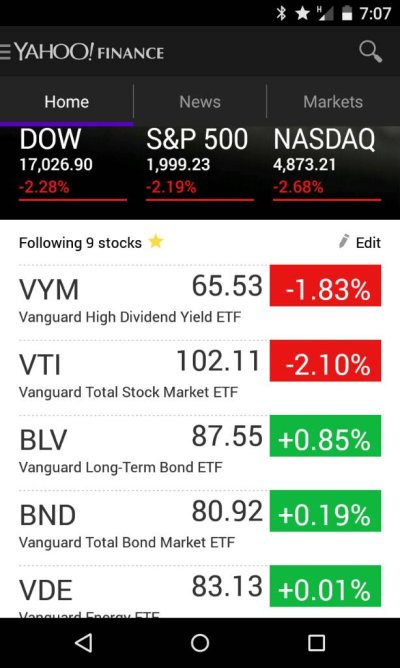OrcasIslandBound
Recycles dryer sheets
Today is turning into a microcosm of why I like to have a chunk of long term bonds in my portfolio. Notice BLV moving opposite the stock market direction. See the picture.
Sent from my Nexus 4 using Early Retirement Forum mobile app
Sent from my Nexus 4 using Early Retirement Forum mobile app

